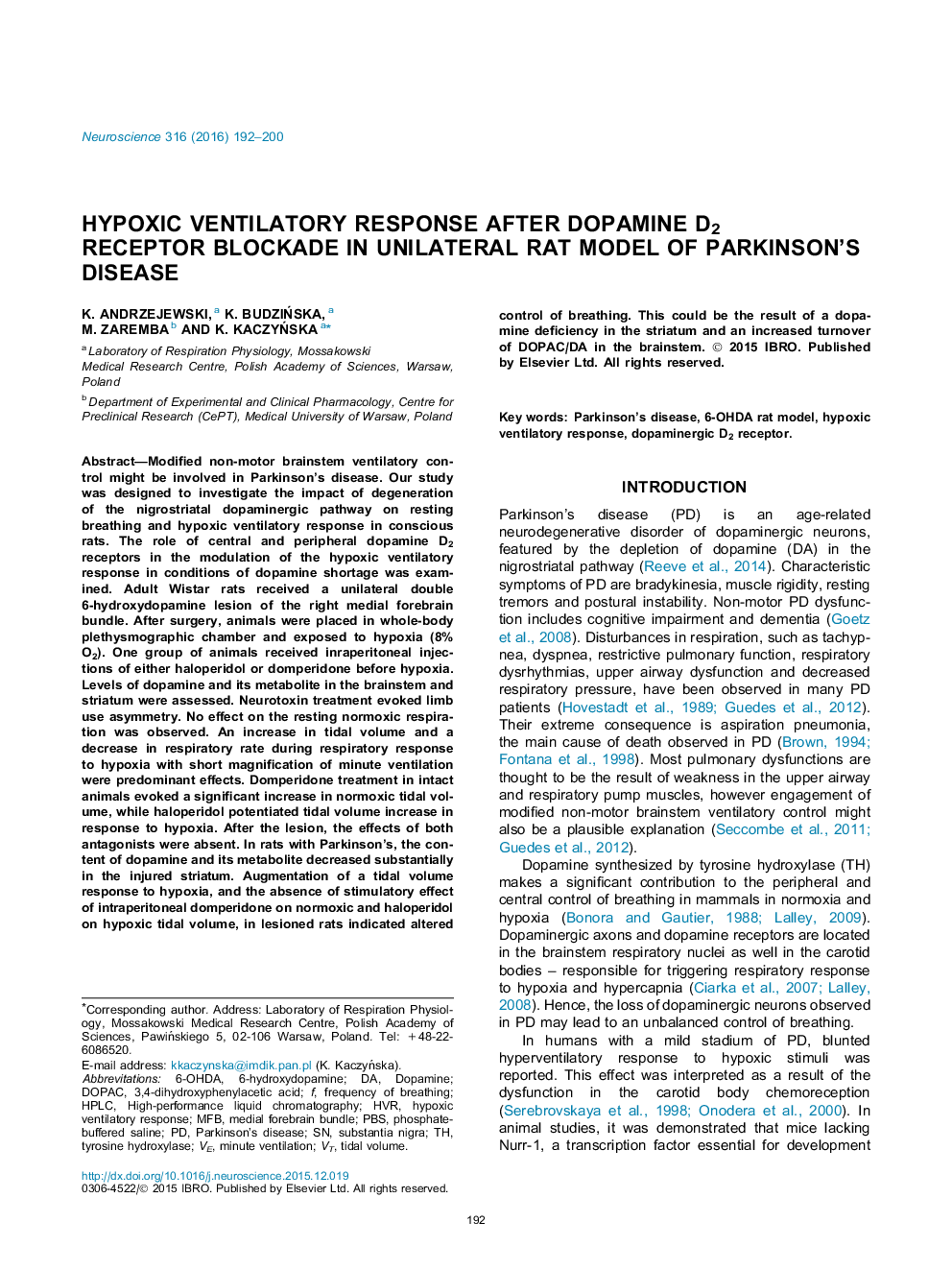| Article ID | Journal | Published Year | Pages | File Type |
|---|---|---|---|---|
| 6271444 | Neuroscience | 2016 | 9 Pages |
â¢Model of Parkinson's disease in respiratory research.â¢Nigrostriatal pathway degeneration modulates respiratory response to hypoxia.â¢The effects of dopaminergic D2 receptor blockade is abolished in parkinsonian rats.
Modified non-motor brainstem ventilatory control might be involved in Parkinson's disease. Our study was designed to investigate the impact of degeneration of the nigrostriatal dopaminergic pathway on resting breathing and hypoxic ventilatory response in conscious rats. The role of central and peripheral dopamine D2 receptors in the modulation of the hypoxic ventilatory response in conditions of dopamine shortage was examined. Adult Wistar rats received a unilateral double 6-hydroxydopamine lesion of the right medial forebrain bundle. After surgery, animals were placed in whole-body plethysmographic chamber and exposed to hypoxia (8% O2). One group of animals received inraperitoneal injections of either haloperidol or domperidone before hypoxia. Levels of dopamine and its metabolite in the brainstem and striatum were assessed. Neurotoxin treatment evoked limb use asymmetry. No effect on the resting normoxic respiration was observed. An increase in tidal volume and a decrease in respiratory rate during respiratory response to hypoxia with short magnification of minute ventilation were predominant effects. Domperidone treatment in intact animals evoked a significant increase in normoxic tidal volume, while haloperidol potentiated tidal volume increase in response to hypoxia. After the lesion, the effects of both antagonists were absent. In rats with Parkinson's, the content of dopamine and its metabolite decreased substantially in the injured striatum. Augmentation of a tidal volume response to hypoxia, and the absence of stimulatory effect of intraperitoneal domperidone on normoxic and haloperidol on hypoxic tidal volume, in lesioned rats indicated altered control of breathing. This could be the result of a dopamine deficiency in the striatum and an increased turnover of DOPAC/DA in the brainstem.
